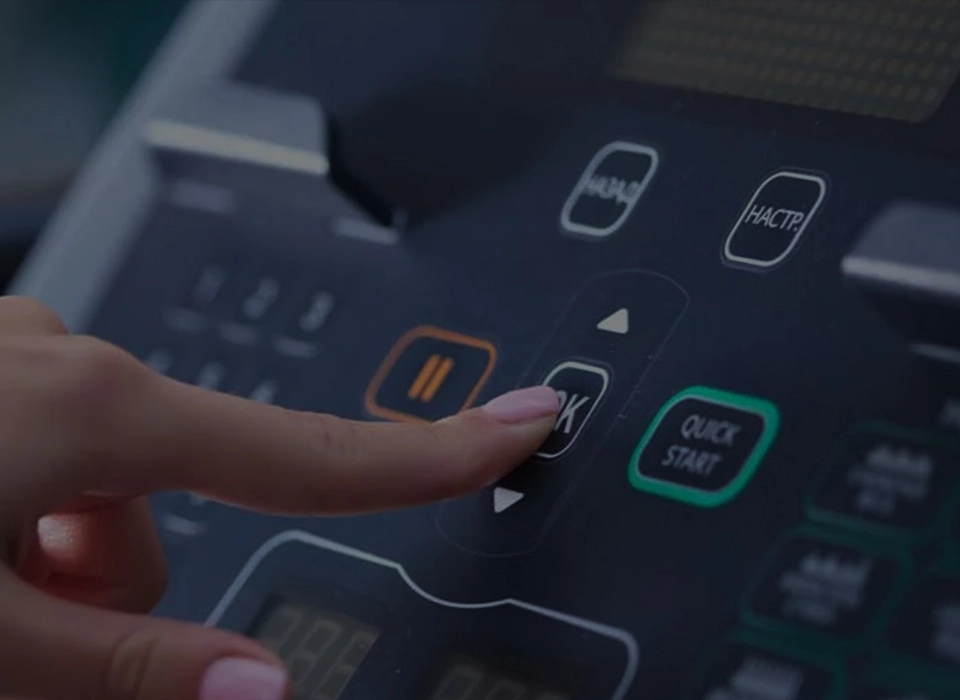If you have ever used a microwave oven or a remote control, chances are you have interacted with a membrane switch without even realizing it. Membrane switches are a ubiquitous technology used in a variety of electronic devices and industrial applications. They offer several advantages over traditional mechanical switches, including durability, flexibility, and customizability. In this article, we will provide a comprehensive guide to membrane switches, covering everything from their basic construction to their applications in various industries.
Membrane switches, also known as membrane keyboards, are electrical switches that consist of several layers of flexible materials, including polyester or polycarbonate films, adhesive layers, and conductive inks. These layers are stacked together to form a thin, flat panel that can be easily activated by pressing on its surface.
The most basic membrane switch consists of three layers: a top graphic overlay layer, a middle spacer layer, and a bottom circuit layer. When pressure is applied to the top layer, it activates the circuit layer beneath it, completing an electrical circuit and triggering a response from the device. The graphic overlay layer is often printed with customized graphics, such as icons, letters, or numbers, to provide visual feedback to the user.
Membrane switches work by using a conductive material, such as silver or carbon, to create an electrical circuit between two layers of the switch. When pressure is applied to the top layer, it causes a dome-shaped section of the switch to collapse, making contact with the bottom layer and completing the circuit. This triggers a response from the device, such as turning on a light or activating a sound.
Membrane switches can be designed to be either normally open or normally closed. Normally open switches are normally not connected and only complete the circuit when pressure is applied, while normally closed switches are always connected and only break the circuit when pressure is applied.
There are several types of membrane switches available, each with its own unique properties and applications. Some of the most common types include:
Tactile membrane switches: These switches have a tactile response, meaning they provide physical feedback to the user when activated. They are often used in devices such as remote controls or industrial control panels.
Non-tactile membrane switches: These switches do not provide physical feedback when activated, but are often used in applications where low profile and low-cost switches are required.
LED backlight membrane switches: These switches are illuminated by LED lights, making them easy to see in low light conditions. They are often used in devices such as medical equipment or industrial control panels.
EL backlight membrane switches: These switches use electroluminescent (EL) technology to illuminate the switch, making them visible in low light conditions. They are often used in devices such as automotive dashboards or consumer electronics.
Membrane switches offer several advantages over traditional mechanical switches, including:
Durability: Membrane switches are designed to withstand heavy use and can last for millions of cycles without wearing out. They are also resistant to moisture, dust, and other environmental factors, making them ideal for use in harsh conditions.
Customizability: Membrane switches can be easily customized to fit the specific needs of a device or application. They can be designed with different colors, graphics, and tactile feedback to enhance the user experience.
Flexibility: Membrane switches can be designed to fit a variety of shapes and sizes, making them ideal for use in devices with limited space or irregular shapes.
Cost-effectiveness: Membrane switches are typically less expensive to produce than traditional mechanical switches, making them a cost-effective solution for many applications.
Despite their many advantages, membrane switches also have some disadvantages to consider, including:
Limited lifespan: While membrane switches are designed to be durable, they do have a limited lifespan and will eventually wear out over time. This can be a concern for devi.
